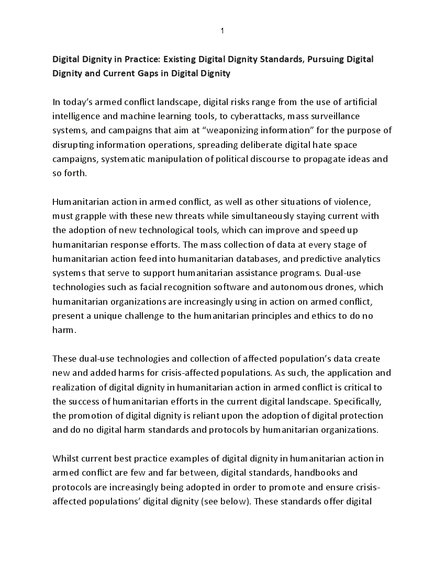
In today’s armed conflict landscape, digital risks range from the use of artificial intelligence and machine learning tools, to cyberattacks, mass surveillance systems, and campaigns that aim at “weaponizing information” for the purpose of disrupting information operations, spreading deliberate digital hate space campaigns, systematic manipulation of political discourse to propagate ideas and so forth.
Humanitarian action in armed conflict, as well as other situations of violence, must grapple with these new threats while simultaneously staying current with the adoption of new technological tools, which can improve and speed up humanitarian response efforts. The mass collection of data at every stage of humanitarian action feed into humanitarian databases, and predictive analytics systems that serve to support humanitarian assistance programs. Dual-use technologies such as facial recognition software and autonomous drones, which humanitarian organizations are increasingly using in action on armed conflict, present a unique challenge to the humanitarian principles and ethics to do no harm.